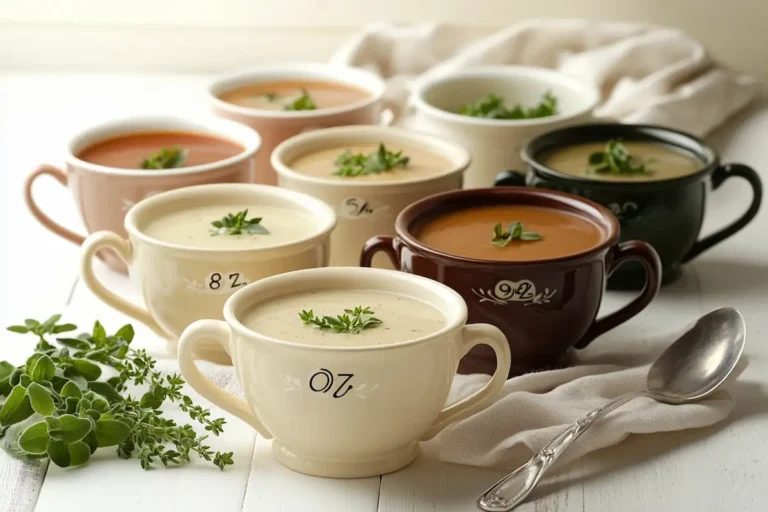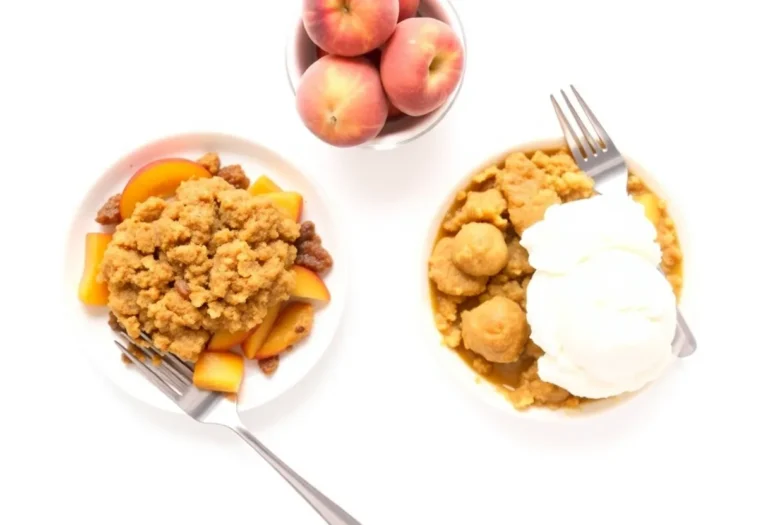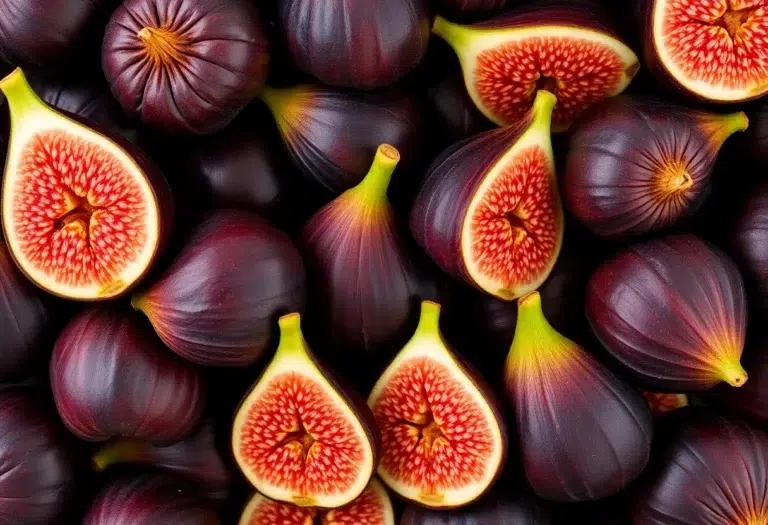Understanding the Basics of Soup Measurement
How many ounces in a soup cup? This common question arises often, especially among home cooks and restaurant professionals. A standard soup cup in the U.S. typically holds between 8 to 12 ounces, though the exact size can vary depending on its purpose and design.
This article delves into the nuances of soup measurements, ensuring you have all the details to serve, enjoy, and portion your soup properly.
Why Knowing Soup Cup Sizes Matters
Understanding soup cup sizes is more than just a trivial detail. Proper portioning can:
- Promote Balanced Meals: Portion control is essential for managing calories.
- Reduce Food Waste: Over-serving leads to leftovers that might go uneaten.
- Enhance Presentation: A well-portioned cup of soup looks more appealing.
From restaurants to homes, knowing the correct measurement for a soup cup ensures satisfaction without excess.
Common Uses for Measuring Soup Portions
Soup measurements aren’t solely about individual servings; they cater to diverse scenarios:
Serving Sizes for Individual Portions
For one person, a soup cup generally ranges between 8 to 12 ounces. This size satisfies hunger without overwhelming the diner.
Portion Sizes for Restaurants vs. Home Use
In restaurants, smaller soup portions (6–8 ounces) are often served as appetizers, while home servings lean towards 10–12 ounces as main courses.
Addressing Confusion in Standard Measurements
Misunderstandings can arise with different types of measuring systems. For example:
- The U.S. measures volume in fluid ounces.
- Other countries may use milliliters, creating conversion challenges.
Historical Perspective on Soup Portioning
The tradition of serving soup in measured portions dates back centuries. In medieval times, soup was served in earthenware bowls that held roughly 1 cup (8 ounces).
How Cultural Variations Affect Soup Sizes
In Asia, soup bowls often exceed 12 ounces to accommodate noodles or rice, while European portions tend to be smaller, emphasizing broth over volume.
How Many Ounces Are in a Standard Soup Cup?
The standard soup cup size varies depending on where you are and the purpose of the measurement. Typically, a soup cup in the U.S. holds between 8 to 12 ounces. However, restaurants and culinary traditions often dictate different standards. Let’s break this down further to understand why these variations exist and how you can navigate them.
Differences Between U.S. and Metric Systems
The U.S. customary system measures soup cups in fluid ounces, while the metric system uses milliliters (ml). This difference often causes confusion when converting recipes or ordering soup abroad.
- U.S. Fluid Ounces to Milliliters: 1 fluid ounce = 29.5735 ml.
- Common Conversions for Soup Cups:
- 8 ounces = 236 ml.
- 10 ounces = 295 ml.
- 12 ounces = 355 ml.
For a global perspective, knowing these conversions ensures accuracy when following recipes from different regions.
Measuring Tools for Accuracy
Accurate measurement of soup portions requires reliable tools. The three most common options are:
- Measuring Cups: These are perfect for quick, rough estimates. Use a liquid measuring cup to account for the fluid nature of soup.
- Kitchen Scales: Weighing your soup in grams can be particularly useful for denser soups.
- Graduated Containers: Found in professional kitchens, these containers are marked with precise measurements for large quantities.
Using Kitchen Scales for Precise Measurement
To measure soup using a scale:
- Place an empty bowl on the scale and note the weight (tare it to zero).
- Pour your soup into the bowl and record the weight.
- Convert grams to ounces (1 ounce = 28.35 grams) if necessary.
This method is ideal for chunky soups, where measuring by volume may not be accurate due to varying solid content.
Tips for Converting Between Units
If your recipe lists measurements in cups but your tools use ounces, follow these quick tips:
- For liquid-based soups, use the 1 cup = 8 fluid ounces rule.
- For chunky or dense soups, weigh ingredients first to determine their combined volume accurately.
- Use online converters or kitchen apps for complex conversions.
Factors That Influence Soup Cup Size
The size of a soup cup can vary based on several factors, such as the type of soup, the dining occasion, and the vessel itself.
Broth vs. Chunky Soup: Volume Differences
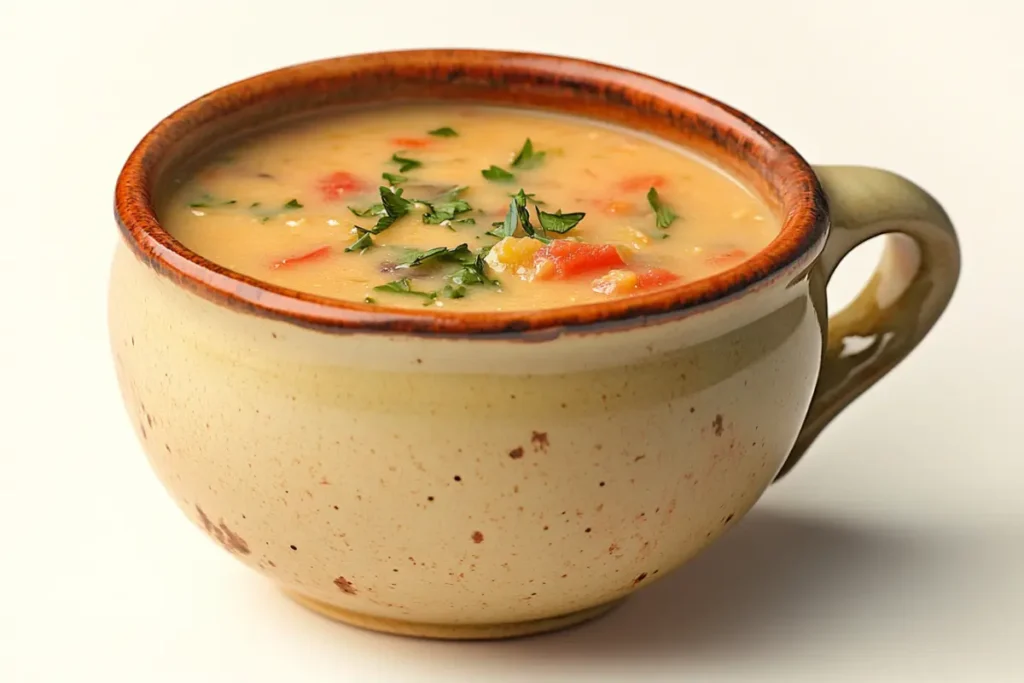
Broth-based soups, being primarily liquid, fit easily into smaller cups (6–8 ounces). Chunky soups with added vegetables, meats, or grains often require larger containers (10–12 ounces) to hold both liquid and solids comfortably.
Understanding Liquid-to-Solid Ratios
The liquid-to-solid ratio in soups significantly impacts the portion size. A hearty chili, for instance, may require less liquid but more volume to accommodate beans and meat, while a bisque remains uniformly fluid and easy to portion.
Choosing the Right Soup Cup for Your Needs

The type of cup you use can affect both the presentation and the practicality of your soup servings. From casual home dining to upscale restaurant service, choosing the right cup ensures satisfaction.
Standard Sizes for Soup Bowls and Mugs
When selecting a soup cup or bowl, consider these typical sizes:
- Small Cups (6–8 ounces): Ideal for starters or light snacks.
- Medium Cups (10–12 ounces): Perfect for a satisfying individual portion.
- Large Bowls (16+ ounces): Best for soups served as a main course.
Materials That Impact Cup Sizes
The material of the cup can also influence its usability and heat retention:
- Ceramic Bowls: These retain heat well and are great for keeping soup warm.
- Glass Cups: Ideal for showcasing colorful soups like tomato or butternut squash.
- Plastic or Disposable Cups: Common for takeout, these typically range from 8 to 12 ounces.
Whether you’re planning a formal dinner or a quick lunch, choosing the appropriate size and material enhances the dining experience.
Real-Life Example: Restaurant Soup Portions
In many U.S. restaurants, a cup of soup is approximately 8 ounces, while a bowl is closer to 12–16 ounces. If you’re serving soup at home, aligning with these standards can make your meal feel more professional.
Additional Tips for Selecting the Right Size
- Consider Your Audience: Children may need smaller portions, while adults might prefer heartier servings.
- Think About the Occasion: Appetizers typically require smaller cups, while main courses need larger ones.
- Account for Seconds: If guests are likely to have multiple servings, smaller initial portions may suffice.
Conclusion
Understanding how many ounces are in a soup cup is essential for proper portioning, whether you’re cooking at home or serving guests in a professional setting. With tools like measuring cups, scales, and knowledge of U.S. versus metric systems, you can confidently measure soup portions every time.
Practical Tips for Measuring Soup Portions
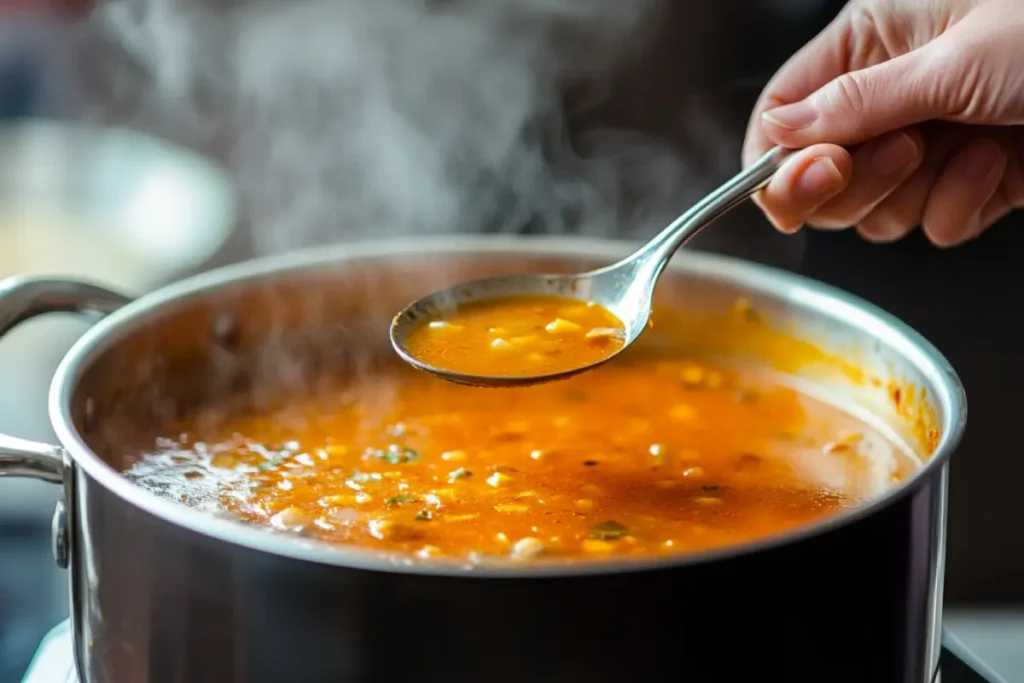
Measuring soup portions accurately is essential for achieving consistency in cooking and dining. Whether you’re preparing soup for a family meal or portioning it for guests, following the right techniques ensures you serve just the right amount. Let’s explore the best ways to measure soup portions and the benefits of doing so.
Why Accurate Soup Measurements Matter
Measuring soup portions serves more than one purpose:
- Prevents Overeating: Proper portions help with maintaining a balanced diet. Refer to these food safety guidelines for best practices in the kitchen..
- Reduces Waste: By preparing just enough, you avoid throwing away leftovers.
- Improves Presentation: Uniform portions create a professional look, especially for formal occasions.
Tips for Measuring Soup Portions
- Use a Ladle: A standard ladle holds about 4 ounces. Knowing this helps you calculate portions easily (e.g., 2 ladles = 1 cup or 8 ounces).
- Choose the Right Bowl: Bowls vary in capacity, so measure your bowl’s volume to ensure consistent servings.
- Pre-Measure Ingredients: Before cooking, measure individual components (broth, vegetables, meat) to estimate the final yield.
- Scale for Precision: Weighing soup ensures accuracy, especially for chunky varieties.
Benefits of Proper Soup Measurements
Taking the time to measure soup portions offers multiple advantages, from health benefits to enhanced culinary skills.
Reducing Food Waste with Accurate Portions
Food waste is a significant issue in households and restaurants alike. By serving soup in measured portions:
- You minimize leftovers.
- You avoid cooking excess amounts.
- You save money by using only what’s needed.
For example, a family of four typically requires about 40 ounces of soup (10 ounces per person). Preparing this amount eliminates waste while ensuring everyone is satisfied.
Enhancing Presentation with the Right Size
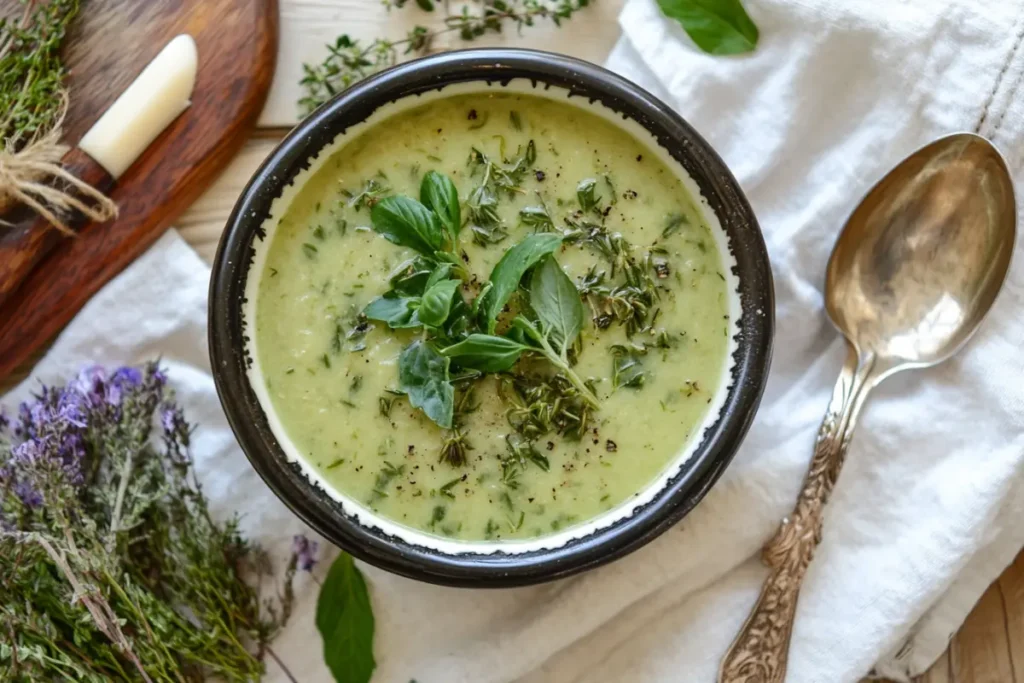
Presentation plays a vital role in how food is perceived. Proper soup portions create a visually appealing balance between the bowl, garnish, and the soup itself. For instance:
- A thick soup like chowder looks best in medium bowls (10–12 ounces).
- A delicate bisque is perfectly suited to smaller cups (6–8 ounces).
Portion Sizes for Dietary Needs
Measuring soup is particularly important for individuals with dietary restrictions. Here’s how you can adjust portions to suit various needs:
- Low-Calorie Diets: Use smaller portions (6 ounces) with broth-based soups.
- High-Protein Diets: Serve larger portions of chunky soups rich in protein.
- Children: Serve smaller bowls (4–6 ounces) to match their appetite.
Wrapping Up: Understanding Soup Measurements
Mastering soup measurements is about more than just numbers; it’s about improving your overall cooking experience and delivering satisfaction to every diner.
How This Knowledge Improves Cooking Skills
Understanding portion sizes teaches precision, a crucial skill in culinary arts. For example:
- Scaling Recipes: If a recipe serves 6 and you need it for 3, you can confidently halve the ingredients.
- Meal Prep Efficiency: You’ll know exactly how much soup to prepare, saving time and effort.
Connecting Measurements to Delicious Results
When soup portions are measured accurately, the result is a harmonious dining experience. You’ll achieve:
- Consistent Flavors: Ingredients are balanced in every serving.
- Perfect Texture: Liquids and solids are proportioned correctly.
- Enhanced Enjoyment: Diners appreciate thoughtful portioning.
Practical Example: A Simple Recipe
Here’s a quick recipe for a classic chicken noodle soup, with portions measured for precision:
Ingredients (Serves 4):
- 8 cups (64 ounces) chicken broth
- 2 cups cooked chicken, shredded
- 1 cup sliced carrots
- 1 cup sliced celery
- 2 cups cooked egg noodles
- Salt and pepper to taste
Steps:
- Heat the broth in a large pot.
- Add the carrots and celery; simmer until tender.
- Stir in the chicken and noodles.
- Season with salt and pepper.
- Serve 10 ounces per bowl, ensuring each has a mix of broth, vegetables, and noodles.
Final Thoughts on Practical Applications
Measuring soup portions accurately is a simple but powerful tool for enhancing your culinary experience. Whether you’re reducing waste, catering to dietary needs, or just looking to serve a perfectly portioned bowl of soup, the tips and techniques in this section will ensure success every time.
FAQs About How Many Ounces in a Soup Cup
Accurate soup measurements can spark many questions, especially when determining the ideal portion size or converting between different units. Below, we address common inquiries to help you better understand soup measurements.
How Many Ounces Is a Standard Cup of Soup?
A standard cup of soup typically holds 8 ounces in the U.S. However, this can vary slightly depending on the type of soup and the cup’s design. For example, a chunky soup may be served in a slightly larger cup (10–12 ounces) to accommodate solids.
What Is the Average Size of a Soup Cup?
The average soup cup size ranges from 6 to 12 ounces. Restaurants often serve 6–8 ounces for appetizers, while home cooks may serve 10–12 ounces for a main course.
How Much Is 1 Cup of Soup?
One cup of soup equals 8 fluid ounces in volume. This measurement applies to both liquid soups (like broth) and chunky soups, though solids can slightly affect the total volume.
What Size Are Soup Cups Typically?
Soup cups are typically 8 ounces, but variations exist based on usage. For example:
Appetizer Portions: 6–8 ounces
Main Course Portions: 10–12 ounces
Always consider the context when estimating soup cup sizes.
Can You Use a Coffee Mug for Soup?
Yes, you can use a coffee mug for soup, but keep in mind that most coffee mugs hold 10 to 12 ounces. This makes them a good substitute for a standard soup cup, especially for casual meals.
Are Soup Bowls Larger Than Cups?
Yes, soup bowls are generally larger than soup cups. While cups hold 6–12 ounces, bowls can accommodate 12–16 ounces or more. Bowls are ideal for heartier soups served as main courses.
How Does Soup Type Affect Portion Size?
The type of soup significantly affects portion size:
Broth-Based Soups: Usually served in smaller portions (6–8 ounces).
Chunky Soups: Require larger portions (10–12 ounces) to balance liquids and solids.
Creamy Soups: Often served in mid-sized portions (8–10 ounces) due to their richness.
Understanding these differences ensures that you serve the appropriate amount for each type of soup.

